Creating A New Food Cycle
By Thaddeus Mast
December 8, 2023
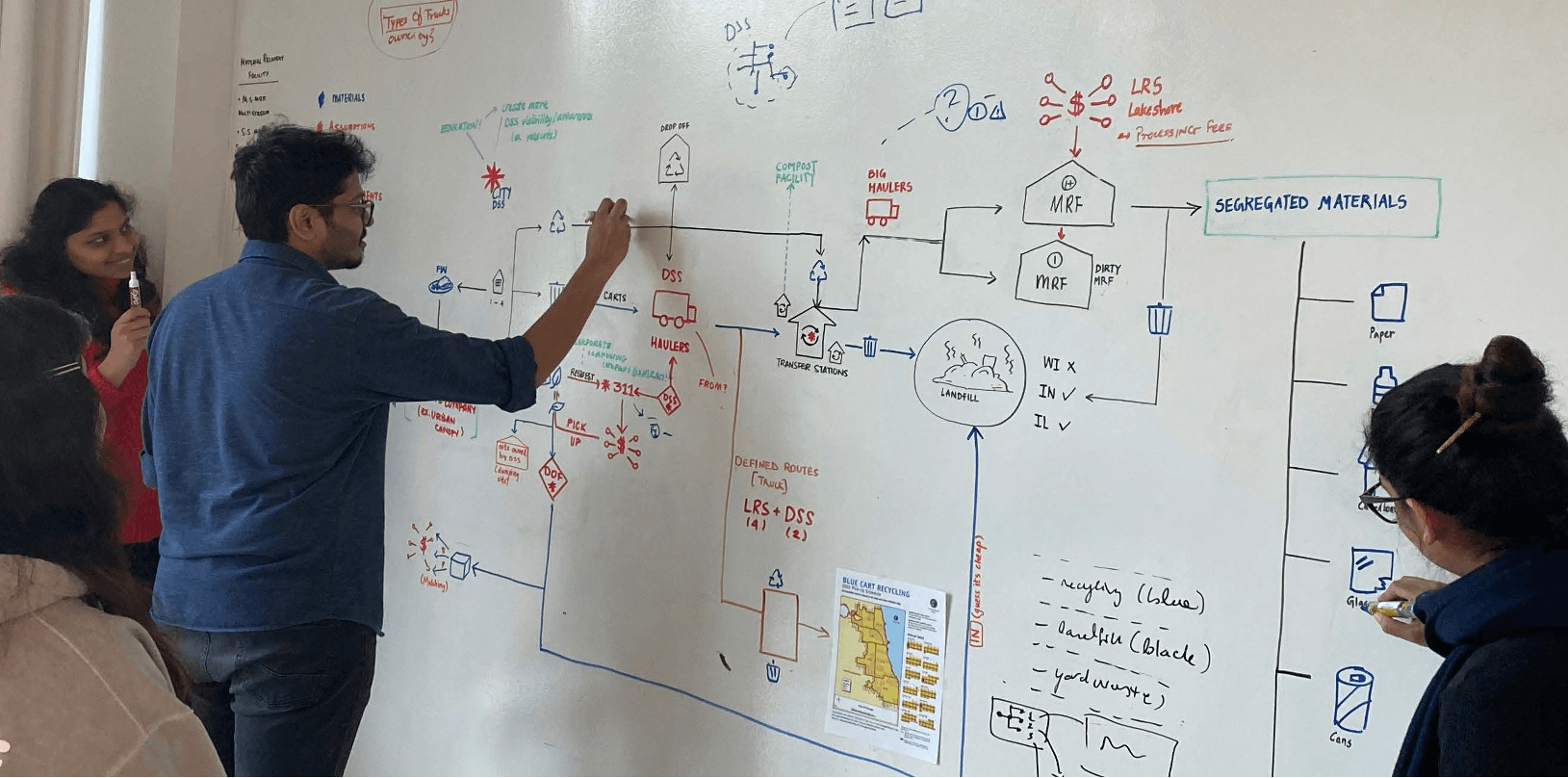
Food waste is a blight that has the potential to be a blessing—if groups and resources work together to feed Chicago residents. Students in a workshop led by Professor Weslynne Ashton have some ideas.
Students in ID’s Spring 2023 Design for Climate Leadership: Food Waste Workshop convened key City of Chicago departments, Chicago Public Schools, and nonprofit organizations the Urban Canopy and Bright Beat to identify the strengths and opportunities in Chicago’s various perishable food programs.

Weeks of research and interviews led students to identify the major problems in the food waste cycle:
- Limited resources,
- Rigid government requirements,
- Misalignment of values and incentives,
- Sluggish information sharing, and
- High variability of food flows
Reducing Waste Can Reduce Hunger
The students’ final report outlines steps to relieve these five core food waste problems, centered on a reduce, rescue, and recycle food waste system, which will be a case study for communities to establish a cohesive, citywide food recycling system while addressing an ongoing crisis—one-in-five Chicagoans faces food insecurity, including 29 percent of Latino communities and 37 percent of Black communities.
The student team highlighted core actionable items that permeate the report:
- Bolster collaborative food-saving infrastructure,
- Facilitate easy data sharing to ensure communication, and
- Change the throwaway culture to push food reform
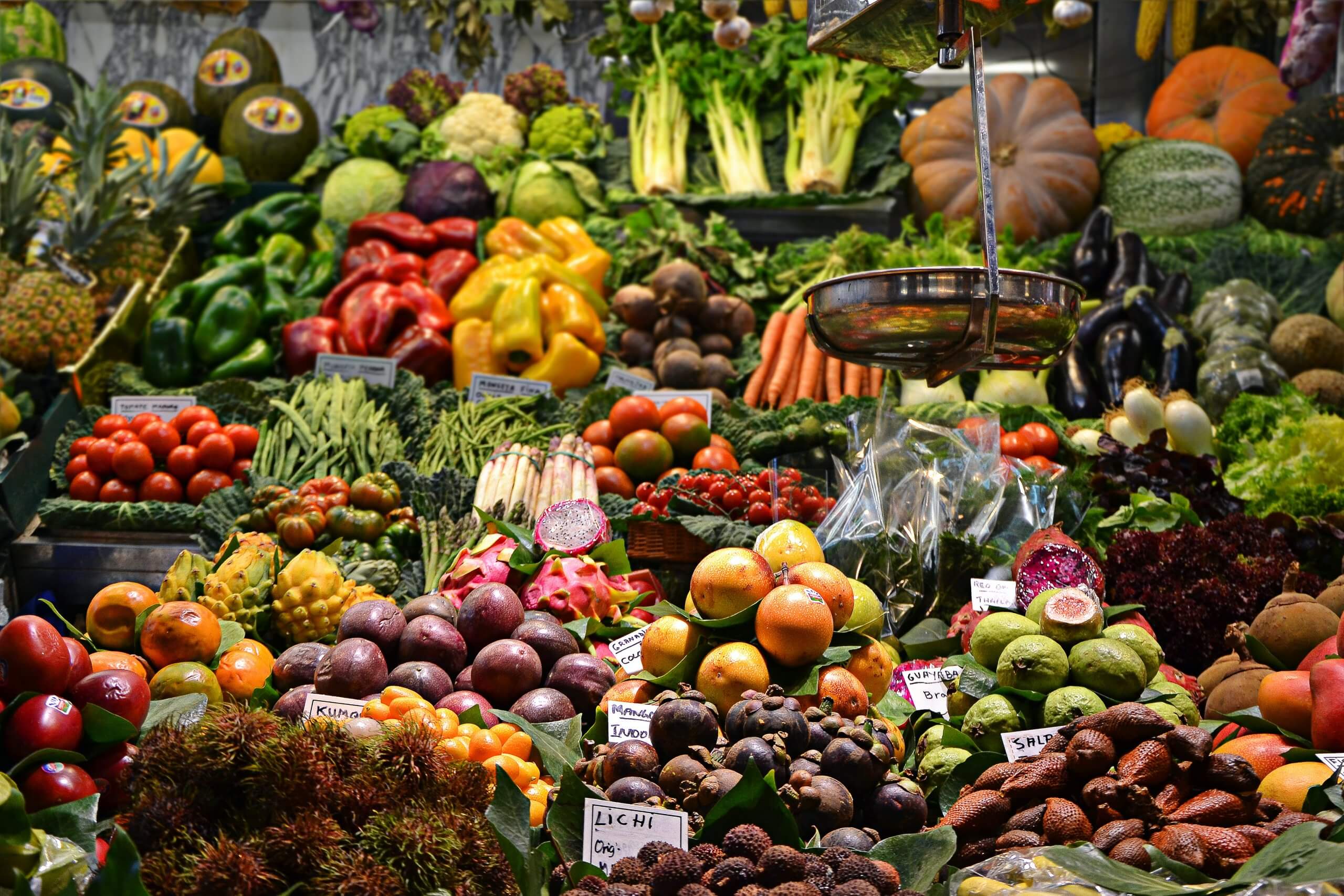
Bolstering Food-Saving Infrastructure
Collaborators need a formal hub to easily bring food rescue organizations, city officials, and more, to the same table. In addition to needing this meeting space, large food storage areas are in short supply. A foodservice company providing dedicated space in its facility for a food rescue partner could be an entry point for a more collaborative culture.
Facilitating Easy Data Sharing
Information and data sharing via a single platform, perhaps organized by city officials, can minimize unpredictable food waste variability. The use of electronic tags for tracking and inventory purposes can address the data-sharing gaps. However, the platform should be flexible enough to accommodate the needs of all stakeholders, from community-led food rescue efforts to catering companies.
Changing Throwaway Culture
Shifting cultural values in the food industry, from viewing food as a commodity to a human right, is a vital foundation for further food system changes. And economics is a key hangup. Composting is the cheapest option for food waste, so companies naturally trend toward it—unless a culture of food reuse is instilled.
Starting with Event Catering
Students pointed to event catering, a large food waste producer, as a field that can implement these changes, beginning with city requirements for a zero food waste plan. This could include an accurate approximation of how much food is needed for an event and working to reduce any extra. Currently, if anything is left over, it can fall on event staffers to find a place for food waste.
After identifying and transporting food from a location—a cornerstone that currently relies on volunteers—the leftover catering food can be separated into three categories: untouched food that can be used as-is or for ingredients in meals for food-insecure households; food fit for animals but not humans; and compost for food unfit for consumption.
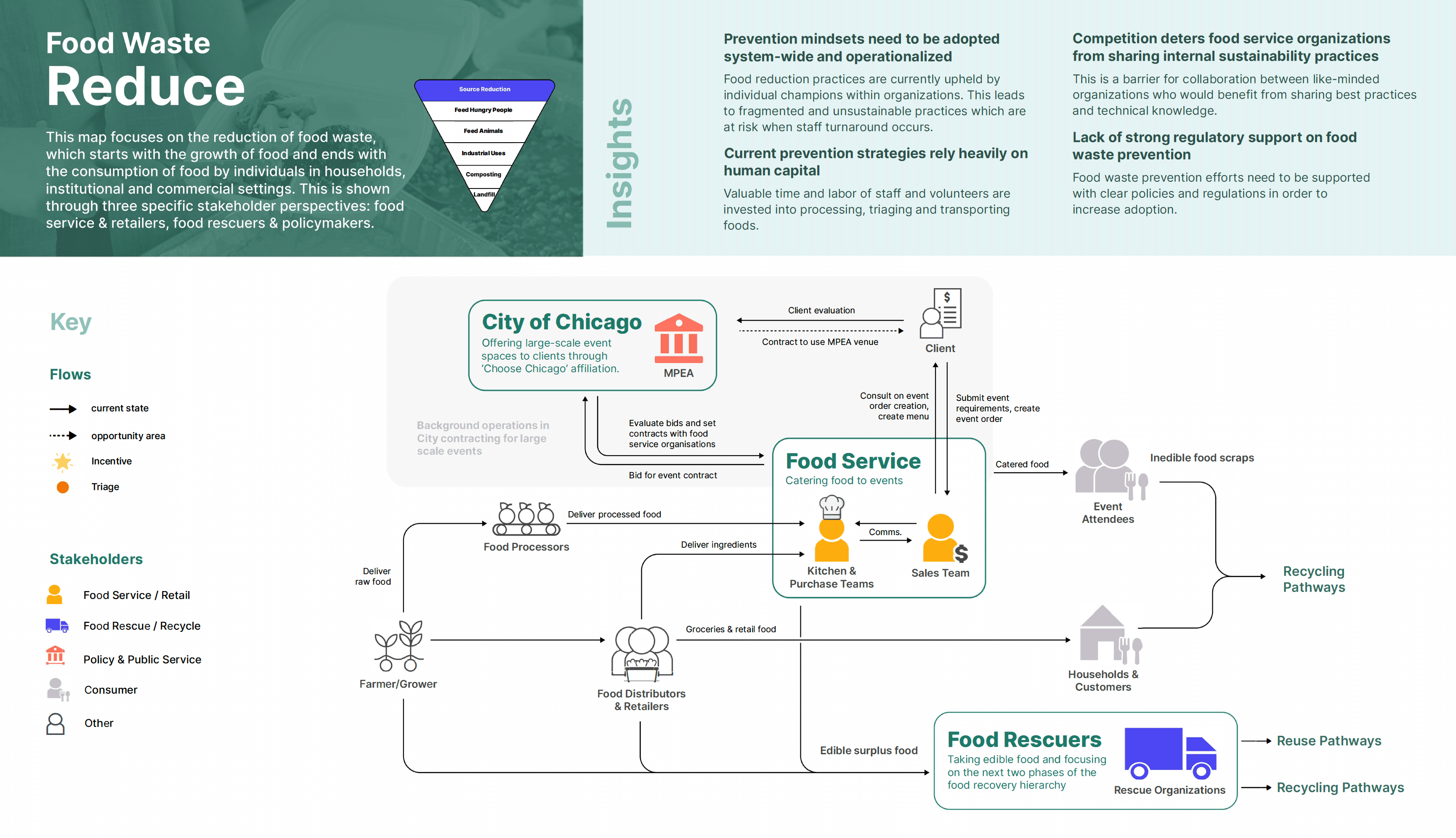
Food Waste Map: Reduce
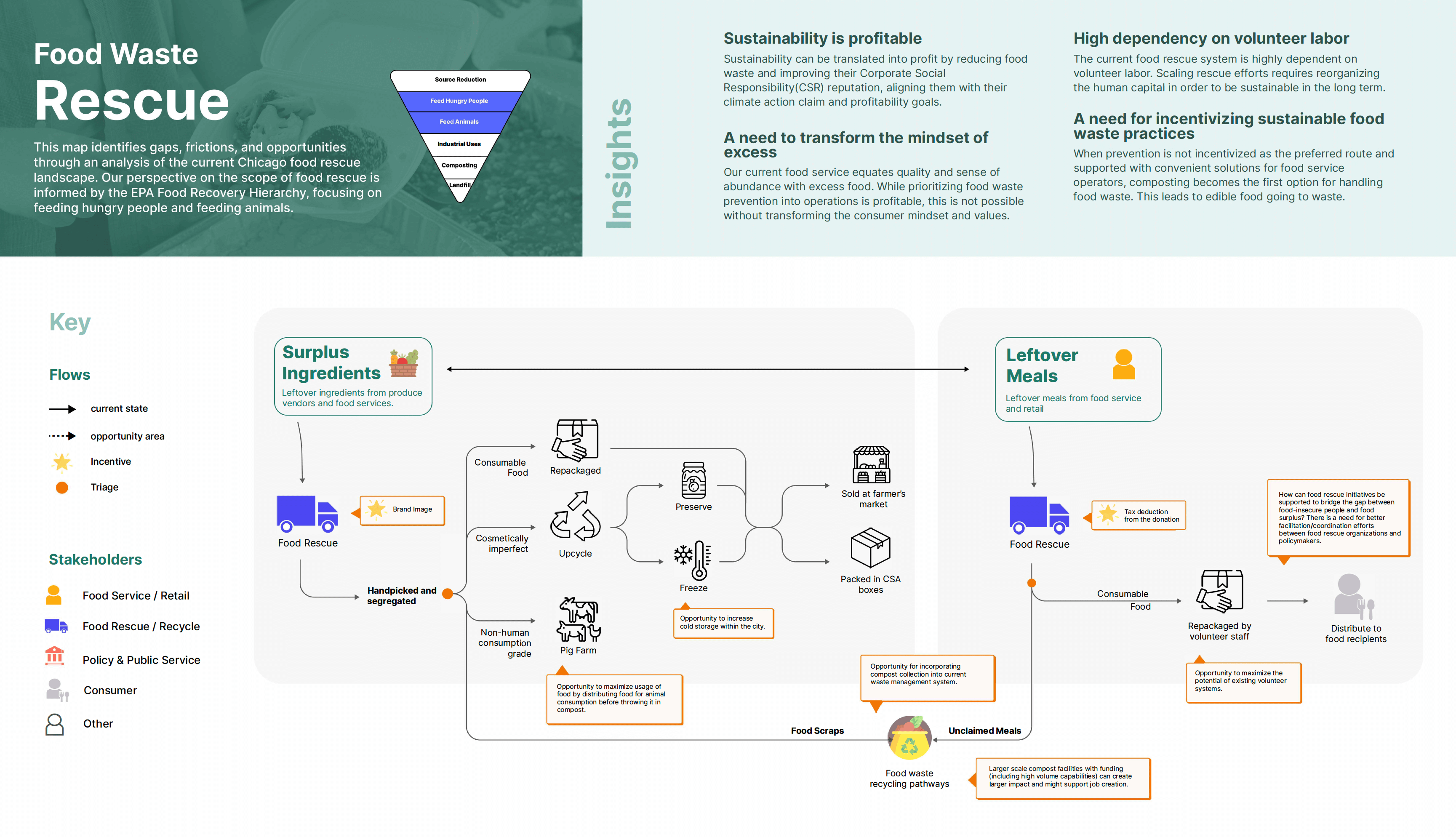
Food Waste Map: Rescue
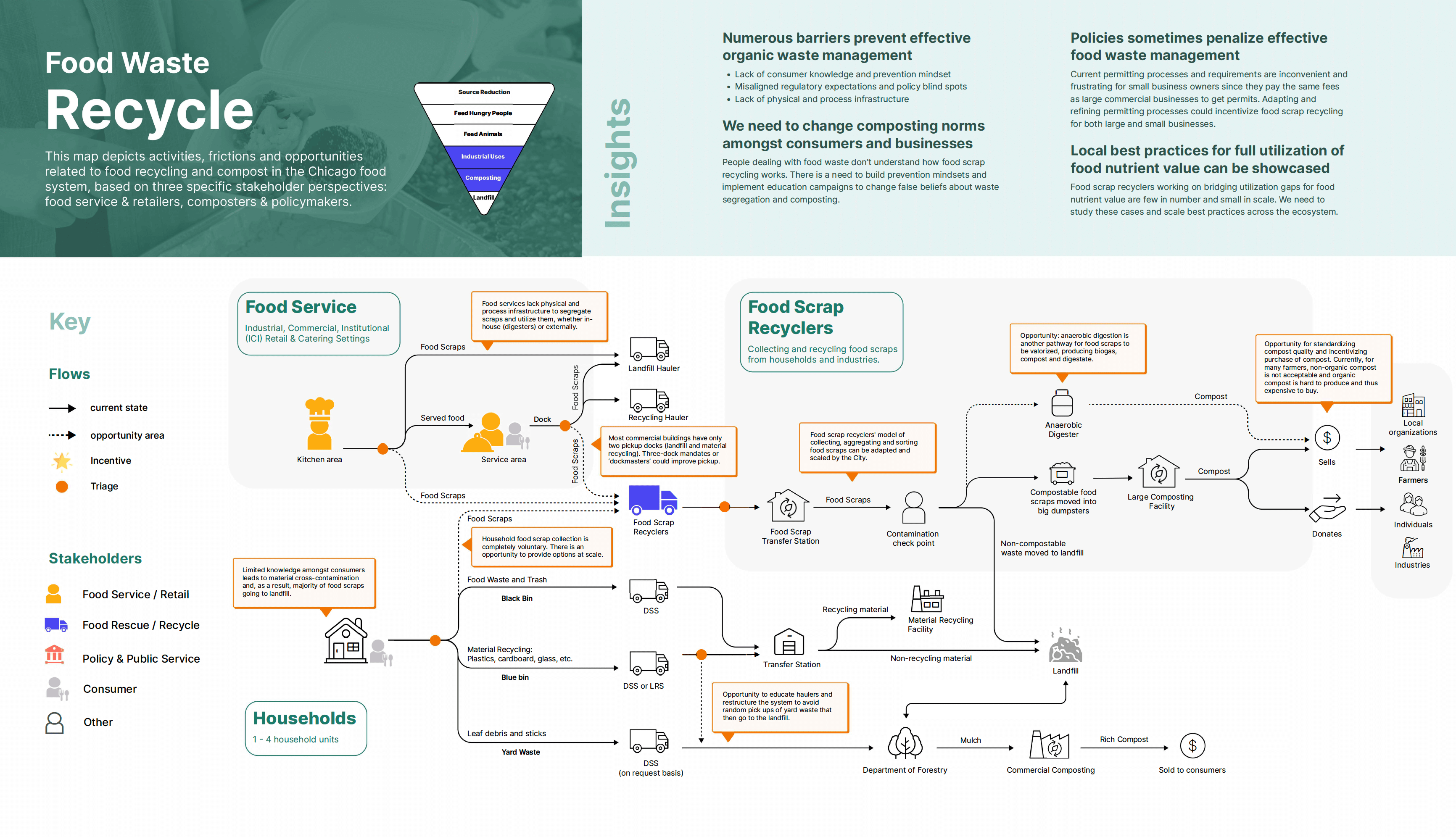
Food Waste Map: Recycle
Food Waste Map: Reduce
This map focuses on the reduction of food waste, which starts with the growth of food and ends with the consumption of food by individuals in households, and in institutional and commercial settings. This is shown through three specific stakeholder perspectives: foodservice & retailers, food rescuers, and policymakers.
Food Waste Map: Rescue
This map identifies gaps, frictions, and opportunities through an analysis of the current Chicago food rescue landscape. Our perspective on the scope of food rescue is informed by the EPA Food Recovery Hierarchy, focusing on feeding hungry people and feeding animals.
Food Waste Map: Recycle
This map depicts activities, frictions, and opportunities related to food recycling and compost in the Chicago food system, based on three specific stakeholder perspectives: foodservice & retailers, composters, and policymakers.

Changing the built environment to accommodate rescued food instead of designing for disposal is also key for growing and maintaining the vital infrastructure.
Citizens should not be ignored in the food waste cycle. Education on food waste and ease of access to recycling options, supported by the City of Chicago and community leaders, can lead to a cultural change. Imposing a fee system for organic waste disposal can also pressure residents to look at food recycling options other than the trash can.
The students’ insights into reducing the waste cycle will feed into ID’s comprehensive look into the food cycle in Chicago.
Creating A New Food Cycle
Weeks of research and interviews led students to identify five major problems in the food waste cycle and center on a reduce, rescue, and recycle food waste system, which will address an ongoing crisis—one-in-five Chicagoans faces food insecurity, including 29 percent of Latino communities and 37 percent of Black communities.
Related
Tags:
Students
- Aman Bhardwaj
- Avani Chaturvedi
- Rutuja Chavan
- Anahita Dasgupta
- Sanjana Kripalani
- Diana Nguyen
- Anish Patil
- Nafisa Shams
- Azra Sungu
- Pitchaya Thaveesakvilai
- Deepakshi Tulshan